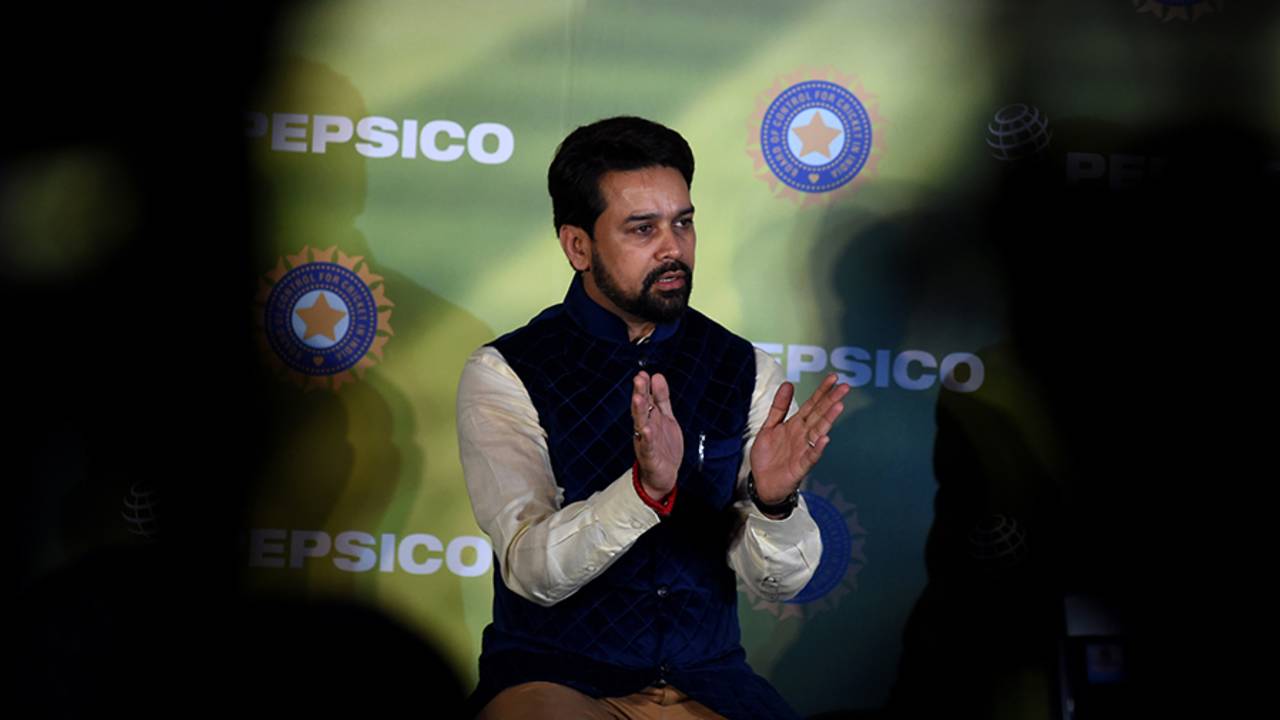The
removal of the highest office-bearers of the BCCI by the Supreme Court should come as no surprise, but it feels as though the ground is shifting nevertheless.
Anurag Thakur isn't the first BCCI president to be dismissed by the court - ironically he was a strong adversary of N Srinivasan when he had met the same fate in 2014 - but this judgement is beyond personalities: it puts the stamp of finality on a radical administrative reform plan for the BCCI. An organisation that, by virtue of the size of India's cricket audience and the resultant wealth, holds the reins to the global governance of cricket, the BCCI has retained, despite the enterprise and dynamism of many of its office-bearers, the contours of an archaic oligarchy.
Regardless of whether the BCCI office-bearers have cause to feel aggrieved about some of the recommendations of the Supreme Court-appointed Lodha committee, it is hard to argue against the point that the removal of the president and the secretary - both of whom could have kept their posts in the short-term - had become inevitable because of their intransigence, a word used repeatedly in the judgement, and overt obstructionism. It's one thing to disagree with the judge, but to openly defy the highest court amounted to challenging the rule of law.
I have argued
here why it was possible to have some sympathy for the BCCI's case, but its top officials wasted the window they had, while the recommendations were merely that, by sparring rather than engaging with the Lodha Committee. That they pursued that course of action was staggering given that the Supreme Court then made the recommendations mandatory through an order.
It's tough to speculate whether it was part of a grander narrative of an ongoing struggle between the executive (Thakur is part of the BJP, the political party that rules the government) and the judiciary, or whether they received terrible legal advice, because their public posturing reeked of hubris, exaggerated self-importance and sarcasm, or whether indeed it was a desperate gamble from people who had not much to lose: adopting the Lodha report would have meant the end of their BCCI careers anyway.
At its cockiest, the strategy seemed oblivious to the distinction between the recommendation of a judicial commission and the writ of law, and, at its most desperate, it felt like BCCI was blackmailing the judiciary with a gun pointed at its own head. Whichever it was, it always felt from the outside to be a spectacular miscalculation. The argument against judicial overreach would have never influenced the judges; the outcome was inevitable.
But keeping personalities aside, the broad theme of the Lodha recommendations is about professionalisation and governance, and about management. Because the BCCI has always been an amateur organisation, the lines between administration and the board have been non-existent. Depending on the nature and influence of the person involved, either the president or the secretary of the board has been de facto CEO, and the treasurer the CFO. In a professional world, professionals ought to administer under the care of the board.
In such a scenario, the tenure of board members would have little bearing on the administration of cricket as long as there is continuity in professional management. Indian cricket owes a lot to a band of well-meaning, passionate and hard-working board members who have given time and service, sometimes for love, sometimes for recognition and sometimes to build their profiles. But the system is also personality-oriented; it has encouraged vote-banks, politicking and deal-making, and opaqueness and lack of accountability.
The incident that brought the BCCI under the judicial scanner in the first place was a direct consequence of the cosy-club culture that pervades the current administrative culture: the BCCI constitution was amended to accommodate Srinivasan's desire to own an IPL franchise and, such was his clout, he encountered little opposition when he chose to stay on as the president even while his franchise and his son-in-law, who ran it, had to be investigated for betting.
Thakur can make the case that under him the BCCI had tried hard to clean up its stables. The cynical view would be that the clean up was prompted by circumstances and that the process was initiated by his immediate predecessor Shashank Manohar, against whom the current administration nurtures a deep sense of betrayal after he jumped ship to become the first independent chairman of the ICC.
The bigger point, though, is that reform should be structural and not dependent on individuals. Best practices should be enshrined and not held hostage to the good intentions of those having to depend on an electoral college.
In the end, the essence of the opposition to the Lodha recommendations had no moral, intellectual or logical force. It was based, pure and simple, on self-preservation. When it came to giving up powers, Srinivasan's successors painted themselves into the same corner. They have now met the same fate. It's a pity because there was promise.
Of course there will be questions and concerns. Can a whole ecosystem be replaced overnight? Will a professional structure be able to recreate the amateur enthusiasm for cricket at the grassroots level? Will the salaried be invested enough to go that extra mile? And, overriding all this, will the deeply-entrenched allow a smooth transfer of power?
No doubt there will disruptions, but fear of chaos is exaggerated. Indian cricket survived and, in fact, continued to flourish after losing Sachin Tendulkar, Rahul Dravid, Anil Kumble, VVS Laxman, Sourav Ganguly and Virender Sehwag in a span of a few years. No one is indispensable, and to resort to a cliché, no one is bigger than the game.
Sambit Bal is editor-in-chief of ESPNcricinfo. @sambitbal
